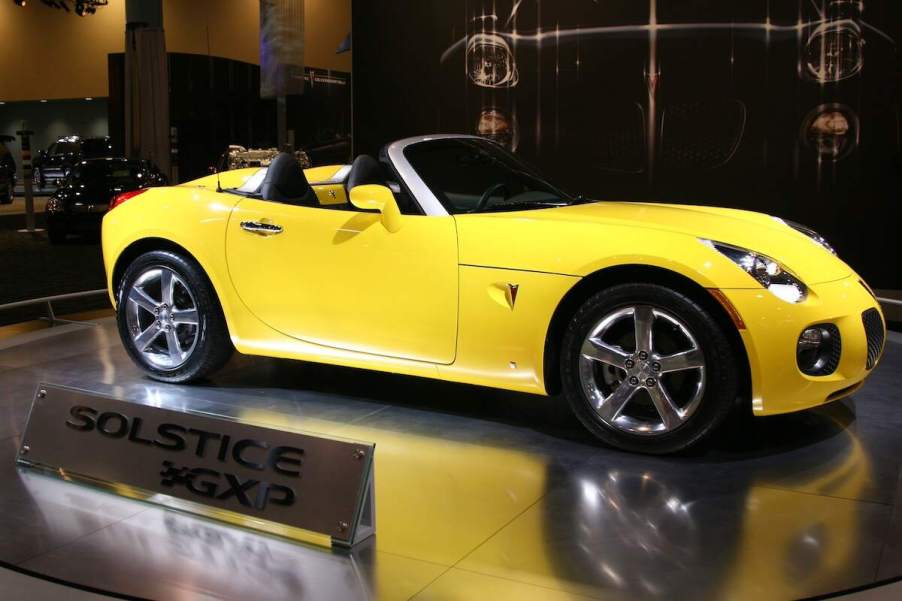
Why Do So Many Pontiac Car Names Refer to Fire or the Sun?
Pontiac remains one of the most beloved American automakers. For years, it was known as General Motors’ “excitement brand.” No, Pontiac didn’t roll out the most luxurious of GM’s vehicles — Cadillac and Buick ruled that segment. Pontiac cars were rarely the fastest, either, with the Chevy Corvette leading the GM lineup.
However, Pontiac always offered excitement, whether through a digital dashboard in the 6000 sedan or a collapsible tent for the Aztek SUV. A specific design language influenced Pontiac car names, typically nodding to Native American people, places, and imagery. Here’s everything you need to know about how Pontiac came up with its most famous vehicle names.
A Native American chief inspired the company’s name

The automaker’s moniker came from the town of Pontiac, Michigan, itself named for Chief Pontiac. He was an Ottowa Native American chief who lived from 1720 to 1769. The city and its resident automotive manufacturer, Oakland, were close enough to Detroit to be absorbed into the automotive boom of the 1900s. General Motors took ownership of the Oakland Motor Car Company in 1909 and created Pontiac as a companion brand in 1926.
Pontiac initially used an image of Chief Pontiac as its first logo. The brand skyrocketed in sales, surviving the Great Depression and even outliving the Oakland Motor Car Company. Pontiac continued its sales dominance, and through those early years, most models used Native American-inspired nameplates. Examples include the Star Chief and Chieftain.
Pontiac car names nod to racing, geographic locations, and Native American imagery

As the Pontiac brand evolved, the company relied less on its Native American-forward naming conventions. Instead, it went all-in on racing, famous locations, and Native American imagery as inspiration for its nameplates.
The most famous Pontiac cars of the 1960s and 1970s include the Pontiac LeMans and Grand Prix, which refer to the races in France. Geographic locations also inspired Pontiac car names, including the Pontiac Bonneville, Montana, and Parisienne, loosely meaning “thing or person from Paris, France.”
Finally, Pontiac used naming conventions that fit its Native American roots, often correlating with nature and elements like air and fire. They include the Pontiac Fiero, Firebird, Phoenix, Solstice, Sunbird, Sunfire, Tempest, and Torrent.
Some strange Pontiac car names marked the end of the brand’s legacy
When General Motors declared bankruptcy in 2009, it needed government assistance to stay afloat. To get the government bailout, GM had to simplify its lineup, so it killed Pontiac. Before Pontiac’s final year of production, the brand’s naming conventions fell apart, mainly consisting of alphanumeric designations. These models included the G3, G5, G6, and G8. They were primarily rebadged variants of other vehicles on the market.
By 2010, General Motors phased out Pontiac, ensuring the auto giant would receive its government loan to survive, History.com explains. Though Pontiac is dead, you can still experience GM’s excitement brand from behind the wheel of a classic Pontiac.






